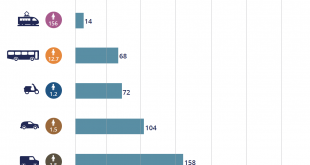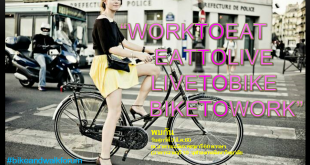Lycra-clad weekend road racers, grandparents on ancient, rusty bone-shakers, kids on full-suspension mountain bikes and hipsters riding fixies are among the array of cyclists now found on Bangkok’s streets legal?

Every vehicle on Thailand’s roads, be it a truck, bus, car, motorcycle or bicycle, is covered by the Land Traffic Act (1979) (the “Traffic Act”). A bicycle under the Traffic Act is defined as a vehicle that is propelled by the rider and is not towed or pushed by an engine. A roadworthy bicycle (of which there appear to be few based on this author’s observations) must have (i) a bell signal which is audible from a distance of 30m; (ii) good brakes which can immediately come to a full stop; (iii) at least one front white light which is visible from a distance of 15m at a level lower than the eyesight of drivers from the opposite direction; and (iv) at least one tail light which illuminates backwards, or red material which is capable of reflecting light.
Are you non-compliant? You could be subject to a maximum fine of 200 baht in respect of any of these deficiencies. Cyclists must not ride (i) carelessly or recklessly in a way which may cause danger to persons or property; (ii) without the control of a handlebar; (iii) parallel with more than two bicycles except on a bicycle lane; (iv) without sitting properly on a normal saddle (ouch); (v) with a passenger (three-wheelers exempt); (vi) with a load or carrying anything which may obstruct handling of the bicycle or cause danger to persons or property; or (vii) towing or being towed by another moving vehicle. If, like many of us, you have fallen foul of one of these rules you face a maximum fine of 500 baht.
The Traffic Act also requires cyclists to keep as close to the edge of the left side of the roadway or bicycle lane as possible which, as experienced bikers know, is where the gravel, glass and other hazards often accumulate. If there is a designated bus lane on the left-hand side of the roadway, the cyclist is required to ride as close to that lane as is possible.
In addition to having to comply with the Traffic Act’s cycling specific provisions, bikers are also subject to many of the general traffic rules such as: complying with traffic signals (by other driversor the police), traffic signs and traffic lights; taking care to not hit pedestrians (with special attention being provided to any children, elderly or disabled people on the road) and keeping a safe distance from vehicles in front of them. Breaching these rules can lead to fines ranging from 500 to 1,000 baht. Interestingly, cyclists are not subject to Section 67 of the Traffic Act, which requires vehicles to comply with posted speed limits.
Like all other Asian nations (except Japan), Thailand does not yet have a compulsory helmet law, even for children. Should a bicycle be involved in an accident with another vehicle, the cyclist is required to stop cycling and give appropriate assistance to the other parties in the collision and immediately report the accident to a traffic officer.
To promote cycling, the Bangkok Municipal Authority has had in place since last May a “Pun Pun” Bike Rental scheme similar to that seen in other urban centres such as London, whereby people can rent designated bicycles and then return them to specified locations. You’ve probably seen them, painted lime green and styled in a way that makes them functional but not tempting theft targets. Another notable initiative has been the addition of the 23.5km loop at Suvarnabhumi airport.
Bicycle lanes are appearing on major roads, and bikes are now even allowed on the MRT, BTS, riverboats and other forms of public transport. The expressways, however, remain off limits to bicycles.
Finally, the State Railway of Thailand recently decided to convert certain third-class carriages of trains to accommodate cyclists and their bicycles. Previously, cyclists had to leave their bicycle in the train’s guard compartment or find enough space near their seat.
If cities such as Vancouver are indicators of where civic development is headed, cycling will become an increasingly important part of Bangkok’s transportation mix. As this will coincide with increased urban density, it is going to require more bike lanes and better adherence to traffic laws if we are all to remain safe and happy
Published: 18 May 2014
Writer: Angus Mitchell, Kunal Sachdev & Ponpun Krataykhwan
Credit by : http://www.bangkokpost.com/news/investigation/410346/are-you-street-legal-or-a-two-wheeled-terror
 ชมรมจักรยานเพื่อสุขภาพแห่งประเทศไทย ชมรมจักรยานเพื่อสุขภาพแห่งประเทศไทย
ชมรมจักรยานเพื่อสุขภาพแห่งประเทศไทย ชมรมจักรยานเพื่อสุขภาพแห่งประเทศไทย



